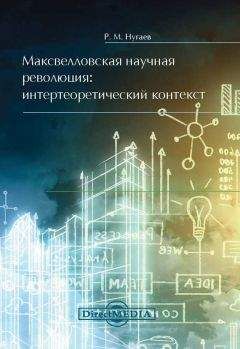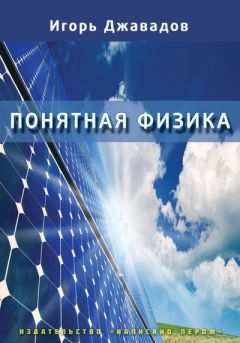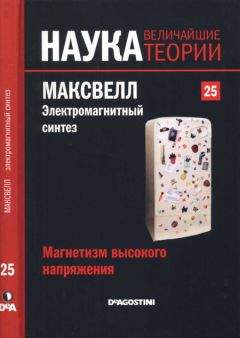Степин В. С. (1976) Становление научной теории. (Содержательные аспекты строения и генезиса теоретических знаний физики). – Минск: изд-во БГУ. – 32 °C.
Степин В. С. (2000) Теоретическое знание. – М.: Прогресс-Традиция. – 744 c. Тулмин Стефен (1984) Человеческое понимание. – М.: Прогрес – 328 С.
Шапиро И. С. (1972) К истории открытия уравнений Максвелла //Успехи физических наук, том 108, вып. 2. С. 319—333.
Фарадей М. (1939) Избранные работы по электричеству. – М. – Л. -304 С. Фейнман Р., Лейтон Р., Сэндс М. (1966) Фейнмановские лекции по физике, тт. 5, 6. – М.: Мир.
Эйнштейн А. [1931] Влияние Максвелла на развитие представлений о физической реальности. – В сб.: Д. К. Максвелл. Статьи и речи. – М.: Наука, 1968. – С. 243—247.
Audi Robert (ed.) The Cambridge Dictionary of Philosophy. Cambridge, Cambridge University Press, 1999. – 1000 p.
Bromberg J. (1967-68) Maxwell’s Displacement Current and the Theory of Light// Archive for History of Exact Science, vol. 4, pp. 218—234.
Buchwald J. (1985) From Maxwell to Microphysics: Aspects of Electromagnetic Theory in the last Quarter of the 19th century. University of Chicago Press. – 339 p. Buchwald Jed Z. (1994) The creation of scientific effects: Heinrich Hertz and electric waves. The university of Chicago Press. – 465 p.
Buchwald Jed Z. (1998) Reflections on Hertz and Hertzian Dipole – In: D. Baird et al. (eds.) Heinrich Hertz: Classical Physicist, Modern Philosopher. Kluwer, pp. 269—280.
Campbell Lewis, Garnett William (1882) The Life of James Clerk Maxwell. L., Macmillan. -342 p. Chalmers A. F. (1975) Maxwell and the displacement current // Physics Education. January 1975, pp. 45 —49.
Chalmers A. F. [1976], (2007). What is this thing called Science? University of Queensland Press. – 266 p.
Chalmers Alan (2001) Maxwell, Mechanism and the Nature of Electricity. Physics in Perspective, vol. 3, no 4, pp. 425 —438.
Coffa Alberto J. (1993) The Semantic Tradition from Kant to Carnap: to the Vienna Station. Cambridge University Press. – 460 p.
D’Agostino Salvo (1975) Hertz’s Researches on Electromagnetic Waves // Historical Studies in the Physical Sciences, vol. 6, pp. 261—323.
D’Agostino Salvo (1984) Maxwell’s Dimensional Approach to the Velocity of Light: Rise and Fall of a Paradigm. – In: S. D’Agostino and S. Petruccioli (eds.) Mathematical Models and Physical Theories. Rome, Accademia Nazionale Delle Scienze. pp. 147—167.
Darrigol Olivier (2002) Electrodynamics from Ampere to Einstein. Oxford University Press. – 515 p.
Dr. Bence Jones (1870) Faraday’s Life and Letters.vol. 1, 2. Philadelphia, J.D. Lippincott. – 385 p.
Einstein A. [1905a] Uber eine die Erzeugung und verwandlung des Lichtes betreffenden hewristischen Lesictpunkt. – Annalen der Physik,, vol. 17, pp. 132—148. Имеется русский перевод: Эйнштейн А. Об одной точке зрения, касающейся возникновения и превращения света. – Собр. соч., т. 3. М., 1966, С. 92 – 107. Имеется английский перевод Анны Бек (Anna Beck) в сборнике: The Collected papers of Albert Einstein. Vol. 2. The Swiss years: writings, 1900 – 1909. Princeton University Press, Princeton, New Jersey, 1989, pp. 86—103. Einstein A. (1905 b): Zur Elektrodynamik bewegter Korper. – Annalen der Physik. vol. 17, pp. 891—921. English translation in: The Principle of Relativity, Dover, New York, 1923. Имеется перевод: Эйнштейн А. К электродинамике движущихся тел. – Собр. соч., т. 1. М., 1965, С. 7 – 35. Использован также перевод Анны Бек (Anna Beck) из сборника: The Collected papers of Albert Einstein. Vol. 2. The Swiss years: writings, 1900 – 1909. Princeton University Press, Princeton, New Jersey, 1989, pp. 140—171.
Einstein A. [1909] Uber die Entwicklung unserer Anschaungen uber das Wesen und die Konstitution der Strahlung. – Physikalische Zeitschrift, vol.10, pp. 817—825. Имеется русский перевод: Эйнштейн А. О развитии наших взглядов на сущность и структуру излучения. – Собр. соч., т. 3. М., 1966, С. 181—195. Einstein Albert (1931) Maxwell’s Influence on the Evolution of the Idea of Physical Reality. In James Clerk Maxwell: A Commemorative Volume. Cambridge University Press.
Faraday M. (1846) Thoughts on Ray-Vibrations. Philosophical Mag. (3), XXVIII, № 188, p. 345.
Forster Malcolm (1988) Unification, Explanation and the Composition of Causes in Newtonian Mechanics. Studies in History and Philosophy of Science, vol. 19, pp. 55 —101.
Friedman Michael (1983) Foundations of Space-Nime Theories. Princeton University Press. – 385 p.
Glymour Clark (1980) Explanations, Tests, Unity and Necessity. Nous, vol. 14, pp. 31—50.
Harman P. M. (2001) The Natural Philosophy of J.C. Maxwell. Cambridge University Press.—228p.
Helmholtz H. [1870] Wissenschaftlische Abhandlungen, Barth, 1882, vol. 1, pp. 611—628.
Helmholtz H. (1899). Preface. – In: Heinrich Hertz. The Principles of Mechanics. L., Macmillan and Co. – pp. VIII —XIII.
Hertz H. [1884] On the Relations between Maxwell’s Fundamental Electromagnetic Equations and the Fundamental Equations of the Opposing Electromagnetics. – In: Heinrich Hertz. Miscellaneous Papers. L., Macmillan and Co, 1896, pp. 273—290.
Hertz H. [1887] On Very Rapid Electrical Oscillations. – In: Heinrich Rudolph Hertz. Electrical Waves, L., 1893, pp. 29 —53.
Hertz H. [1888 a] On the Finite Velocity of Propagation of Electromagnetic Actions. – In: Heinrich Rudolph Hertz. Electrical Waves, L., 1893, pp. 107-123. Hertz H. [1888 b] On Electromagnetic Waves in Air and Their Reflection. – In: Heinrich Rudolph Hertz. Electrical Waves, L., 1893, pp. 124 —136.
Hertz H. [1889 a] The forces of Electric Oscillations, Treated According to Maxwell’s Theory. – In: Heinrich Rudolph Hertz. Electric Waves. L., Macmillan, 1893, pp. 137—159.
Hertz H.R. [1889b] On the Relations between Light and Electricity. – In: Heinrich Hertz. Miscellaneous Papers. L., Macmillan, 1896, pp. 313—324.
Hertz H.R. [1890a] On the Fundamental Equations of Electromagnetics for Bodies at Rest. – In: Heinrich Rudolph Hertz. Electric Waves. L., Macmillan, 1893, pp. 195 —240.
Hertz H.R. [1890b] On the Fundamental Equations of Electromagnetics for Bodies in Motion. – In: Heinrich Rudolph Hertz. Electric Waves. L., Macmillan, 1893, pp. 241 —268.
Hertz Heinrich Rudolph (1893) Electric Waves. L., Macmillan. – 297 p.
Hertz Heinrich Rudolph (1896) Miscellaneous Papers. London: Macmillan. – 340 p.
Hertz Heinrich (1899) The Principles of Mechanics presented in a new form (translated by D.E. Jones). L., Macmillan. – 308 p.
Hon, Giora, and Bernard R. Goldstein (2012) Maxwell’s contrived analogy: An early version of the methodology of modeling. Studies in History and Philosophy of Modern Physics, vol. 43, pp. 236—257.
Hunt Bruce J. (2005) The Maxwellians. Cornell University Press. – 280 p. Kant Immanuel (1783) Prolegomena to any future metaphysics that will be able to come forward as science. – In: Immanuel Kant. Theoretical Philosophy after 1781. Cambridge: Cambridge University Press, 2002.
Kitcher Philip (1981) Explanatory Unification. Philosophy of Science, vol. 48, pp. 507—531.
Kukla Andre (1995) Scientific Realism and Theoretical Unification. Analysis, vol. 55, pp. 230—238.
Kuhn T. S. (1977) Objectivity, Value Judgement and Theory Choice. – In: The Essential Tension. University of Chicago Press, pp. 320—339. Lakatos Imre (1978) The Methodology of Scientific Research Programmes. Philosophical Papers, volume 1.Edited by J. Worral & G. Currie, CUP. – 254 p. Mahon Basil (2003) The Man Who Changed Everything. The Life of James Clerk Maxwell. John Wiley. – 215 p.
Mamchur E. A. (2010) Contradictions, Synthesis and the Growth of Knowledge. International Studies in the Philosophy of Science, vol. 24, number 4, pp. 429-435. Maxwell J.C. [1856] On Faraday’s Lines of Force. The Transactions of the Cambridge Philosophical Society, vol. X, part 1. Reprinted in «The Scientific Papers of James Clerk Мaxwell», 1890, vol. 1, pp. 155-229. Maxwell J.C. [1861] On Physical Lines of Force. Philosophical Magazine, vol. XXI. Reprinted in «The Scientific Papers of James Clerk Мaxwell», 1890, vol. 1, pp. 451-513.
Maxwell J.C. [1864] Dynamical Theory of Electromagnetic Field. Reprinted in «The Scientific Papers of James Clerk Мaxwell», 1890, vol. 1, pp. 526-597. Maxwell J.C. [1868] Note on the Electromagnetic Theory of Light. Philosophical Transactions, vol. CLVIII. Reprinted in «The Scientific Papers of James Clerk Мaxwell», 1890, vol 2, pp. 137—142.
Maxwell J.C. [1870] Address to the mathematical and physical sections of the British Association. Liverpool, September 15, 1870. Reprinted in «The Scientific Papers of James Clerk Мaxwell», 1890, vol. 2, pp. 215 —219.
Maxwell, James. [1873] On Action at a Distance. Reprinted in «The Scientific Papers of James Clerk Мaxwell», 1890, vol. 1, 315—320.
Maxwell J.C. [1877a] Hermann Ludwig Ferdinand Helmholtz. Nature, vol. XV. Reprinted in «The Scientific Papers of James Clerk Мaxwell», 1890, vol.2, pp. 592 —598.
Maxwell J.C. [1877b] Ether. Encyclopedia Britannica. Reprinted in «The Scientific Papers of James Clerk Мaxwell», 1890, vol.2, pp. 763—775.
Mertz John Theodore (1964) A history of European Thought in the Nineteenth Century, 4 vols. Edinburgh: William Blackwood and Sons, 1903—1912. Vols 1 and 2 reprinted as «A History of European Scientific Thought in the Nineteenth Century. NY, Dover. – 850 p.
Morrison Margaret (2000). Unifying Scientific Theories: Physical Concepts and Mathematical Structures. Cambridge University Press. – 270 p.
Nersessian Nancy J. (1985) Faraday’s Field Concept. – In: Gooding David & James Frank A.J. (eds.) Faraday Rediscovered. NY, pp. 377—406.
Niven W.D. (1890) A Preface to «The Scientific Papers of J.C. Maxwell». Cambridge: Cambridge University Press, vol. 1, pp. I —XIII.
Nugayev Rinat M. (1985) The History of Quantum Theory as a Decisive Argument Favoring Einstein over Lorentz // Philosophy of Science, vol. 52, pp. 44 —63. Olson Richard (1975) Scottish Philosophy and British Physics, 1750-1880: A Study in the Foundations of the Victorian Scientific Style. Princeton, NJ, Princeton University Press. – 349 p.
Papas Charles (1988) Theory of Electromagnetic Wave Propagation. N.Y.: Dover. – 272 p.
Patton Lydia (2009) Signs, Toy Models and the A Priori: from Helmholtz to Wittgenstein. Studies in History and Philosophy of Science, 4093), pp. 281-289. Pearce Williams L. (1965) Michael Faraday, a biography. N.Y., Basic Books. – 531 p.
Pearce Williams L. (1966) The origins of field theory. L., Random House. – 148p. Russell Colin. Michael Faraday: physics and faith.Oxford University Press, 2000. – 128 p.
Sengupta D. L., Sarkar T. K. (2003) Maxwell, Hertz, the Maxwellians, and the Early History of Electromagnetic Waves // IEEE Antennas and Propagation Magazine, April, vol. 45, № 2, pp. 12 —16.
Siegel Daniel M. [1991] Innovation in Maxwell’s electromagnetic theory: molecular vortices, displacement current, and light. Cambridge University Press. – 229 p.
Smirnov-Rueda Roman (2001) Were Hertz’s «crucial experiments» on propagation of electromagnetic interaction conclusive? – In: Instantaneous Action at a Distance in Modern Physics: pro and contra. Andrew E. Chubykalo, Viv Pope, Roman Smirnov-Rueda (eds.), Nova Science Publishers, N.Y., pp. 57—69.
Thomson W., Taite P. (1867) A Treatise on Natural Philosophy. L., Clarendon Press. – 727 p.
Snyder Laura S. (2012) William Whewell. The Stanford Encyclopedia of Philosophy, winter edition.
Thomson W. (1905). On Aether.Proc. Roy. Soc. Edinb., XXV, p. 565.
Watkins John (1984) Science and Scepticism. Princeton University Press. – 406p. Wayne Andrew (2002) Critical Notice. Canadian Journal of Philosophy, vol. 32, № 1, March, pp. 117—138.
Weber W. (1846) Elektrodynamische maasbestimmungen. Uber ein allgemeines Grundgesetz der Elektrischen Wirkung. – In: W. Weber. Werke, Berlin, 1893, Dritten Band, pp. 25 —211.
Whewell William (1847) The Philosophy of Inductive Sciences, founded upon their history, in 2 volumes. Second edition. L., John W. Parker and son. Whewell William (1860) On the Philosophy of Discovery. Chapters Historical and Critical. L., John W. Parker and son. – 403 p.
Whittaker Edmund Taylor (1910). A history of the theories of aether and electricity: from the age of Descartes to the close of the nineteenth century. L., N.Y., Longmans, Green and Co. – 470 p.
Abstract. Maxwellian electrodynamics genesis is considered in the light of the author’s theory change model previously tried on the Copernican and the Einstein revolutions. It is shown that in the case considered a genuine new theory is constructed as a result of the old pre-maxwellian programmes reconciliation: the electrodynamics of AmpereWeber, the wave theory of Fresnel and Young and Faraday’s programme. The «neutral language» constructed for the comparison of the consequences of the theories from these programmes consisted in the language of hydrodynamics with its rich content of analogous models ranging from the uncompressible fluid up to molecular vortices. The programmes’ meeting led to construction of the whole hierarchy of crossbred objects beginning from the displacement current and up to common hybrids. After that the interpenetration of the pre-maxwellian programmes began that marked the beginning of theoretical schemes of optics and electromagnetism unification. Maxwell’s programme did assimilate some ideas of the Ampere-Weber programme, as well as the presuppositions of the programmes of Fresnel and Faraday; and the significance of this fact for further methodology of scientific research programmes development is discussed.





